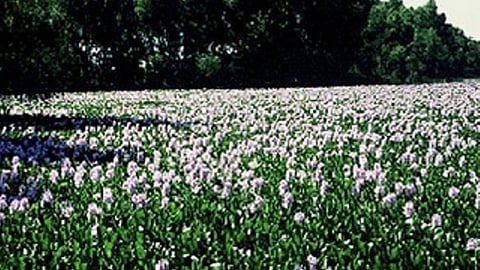
- Topics
- Feature
- Opportunities & Events
- About
- Hindi Portal
- Data
- Topics
- Feature
- Opportunities & Events
- About
- Hindi Portal
- Data

Known as "Hari-ke-Pattan", this wetland is the largest in the Tarn Taran Sahib district of the Punjab in northern India and has the Harike Lake in its deeper part [1]. Its rich biodiversity plays an important role in maintaining the hydrological balance in the catchment area. It also supports a vast range of migratory birds including a number of globally threatened species [1].
The paper titled 'Evaluation of the water quality pollution indices for heavy metal contamination monitoring in the water of Harike wetland (Ramsar site), India' published in the International Journal of Scientific and Research Publications, informs that the wetland has been recognised by the Ramsar Convention for conservation, development and preservation since 1990.
The wetland spreads into the three districts of Amritsar, Ferozepur and Kapurthala in Punjab and covers an area of 4100 ha. This wetland is also important because it is situated on the confluence of two rivers of the Indus river system i.e.the Beas and the Sutlej. The journey of the river Beas ends here and the river Sutlej flows downstream and enters into Pakistan.
The wetland receives large quantities of untreated industrial effluents from surrounding cities through inflowing rivers, which is threatening its very existence. Many large industrial factories including cement factories, paint manufacturing plants, dying industries, pesticide and insecticides factories, leather industries and tanneries are located along the banks of the river Sutlej and discharge polluted water into it, which ultimately pollutes the Harike wetland.
The paper describes the findings of a study that analysed the quaity of the water from the wetland. It determiined the concentrations of lead (Pb), chromium (Cr), copper (Cu), nickel (Ni), zinc (Zn), cadmium (Cd), aluminum (Al) and iron (Fe) in its waters. The data collected was to be shared with stakeholder agencies to start immediate pollution mitigation and conservation measures. Water samples were collected from March, 2013 to February, 2014 in four different seasons of the year from five sites in the Harike wetland.
The study found that most of the metal ions were in higher concentrations as compared to international standards making the water unfit for drinking and irrigation, and also unsafe for aquatic animals residing there. High concentration of heavy metals like Cd, Cu, Pb, Cr, Ni, Co and Fe with an index Cd (3), placed the water quality in the high contamination level. Heavy metal pollution index HPI, on the other hand, considered the level of contamination as critical. Fluctuations in the concentration of various heavy metals were also observed in different seasons.
The paper ends by arguing that necessary conservation and management measures need to be urgently undertaken to improve the deteriorating water quality of this globally recognised wetland.
1. Wikipedia (2015) Harike Wetland. Downloaded from the site on the 8th of March 2015